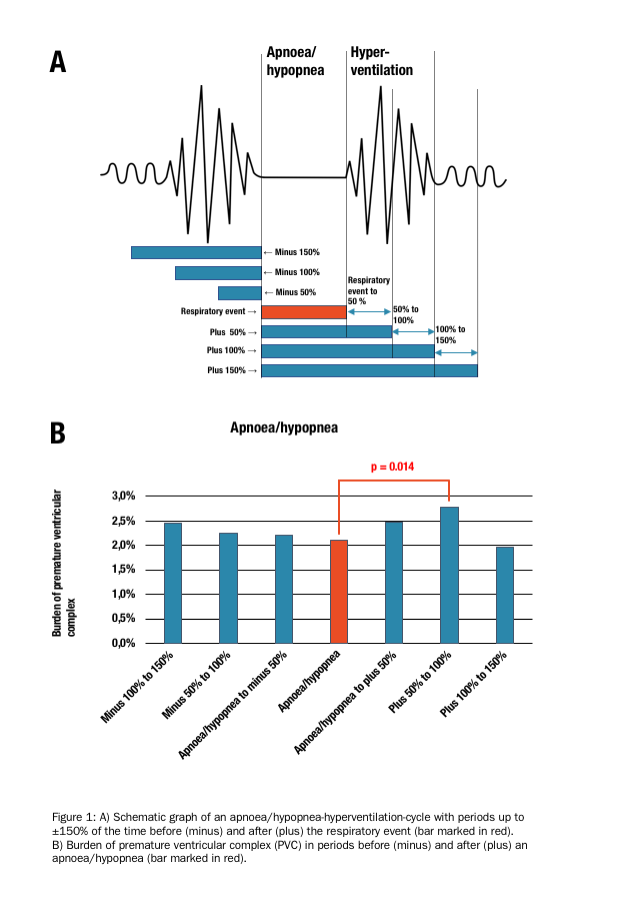Abstract
Since in central sleep apnoea (CSA) with Cheyne-Stokes respiration (CSR) sympathetic tone is highest during the hyperventilation phase, premature ventricular complex (PVC) may occur more frequently during this phase. The objective of this analysis was to test whether PVCs are more frequent during the hyperventilation than the apnoea/hypopnea phase of CSA with CSR.
This cross-sectional ancillary analysis included participants from the SERVE-HF major sub-study with heart failure with reduced ejection fraction (HFrEF), CSA, and nocturnal ECG from polysomnography with PVC >30/h. A case cross-over design was used to analyse the ventricular arrhythmia (PVC burden, [PVC/normal beats]) in the context of respiratory exposure (apnoea/hypopnea). To demonstrate a temporal association, we assessed the time before, during and after the exposure (Fig. 1A). Periods of ±150% of the time of exposure were chosen according to a subset analysis that showed those periods of +100% reflect subsequent hyperventilation phase after an apnoea.
54 Patients were eligible for this analysis (age 67±10 years, left ventricular EF 33±9% and apnoea-hypopnea-index 37±13/h).
The PVC burden increased by 28% in the period of 50-100% after the apnoea/hypopnea than during this phase (Fig. 1B). Subsuming, there is a temporary raise of PVC in patients with HFrEF and CSA after apnoea/hypopneas.
